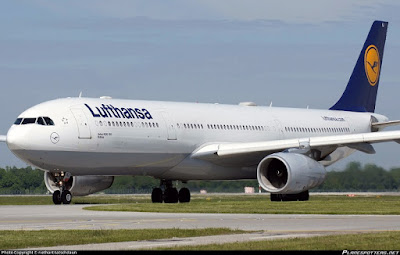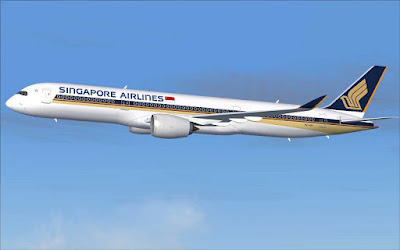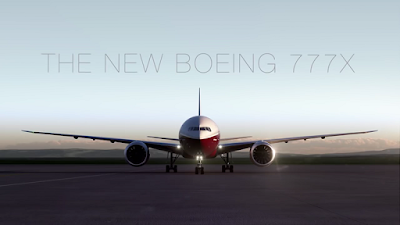Long Haul Flights is an important
part of International Aviation. It opens up New Routes and expands the Network
of an Airline. There was a time in the 1970s when the Boeing 747 was
introduced. This 4 Engine Jetliner was a Double Decker capable of holding up to
450 Passengers. Also, it had a longer range. The B747 was capable of flying Non-Stop
for 12 hours. The range was less initially, eventually it was increased. At
that time, a 12-14-hour flight was considered very long. Now times have
changed. In this Blog, we will discuss the various stages of Long Haul Flying
and the Future. The information in this Blog is provided by Airbus, Boeing and
different frequent flyer travellers. Full credits to Airbus and Boeing for the
images. Let’s get started…..
1. The 1980s: The 1980s was a time
when the B747 was flying all over the world. Small jets like A300, A310, A320
and B737 were quickly gaining popularity for short haul routes. Boeing and
Airbus were thinking of building Medium Haul Twin Engine jets to tap the Medium
Haul Continental Routes. The B747 was used for Long and Trans-Atlantic Routes.
2. The 1990s: The 90s was the most
revolutionary time in Aviation. Both Boeing and Airbus introduced Medium and Long-Haul
Planes, giving the Airlines a wide choice. In this decade, we saw the
introduction of A330, A340, B757, B767 and the Boeing B777. Aviation
Enthusiasts know very well how revolutionary all these jets were. Except for
the A340, all were Twin Engine Medium and Long-Haul Jets. The B777 has the same
capability of a B747 with just 2 Engines and half the maintenance. In these,
the B777 and the A330 turned out to be the most successful. The B757 and B767
were used for Medium Haul routes with Medium capacity. The A340 was a stretched
A330 with 4 Engines and a range of over 14 hours.
3. The 2000s: The New century had a
sad start. The 9/11 attacks in 2001 had a severe impact on Aviation. It took
Boeing and Airbus months to get back orders. By 2005, the situation was
improved. During this time, we saw the emergence of 4 Big Asian carriers,
namely Emirates, Etihad, Qatar and Turkish. These 4 Airlines took away all the
International Traffic from European and American carriers. They capitalised
their geographic locations to build their Hub as a busy connecting Airport.
Airbus came to the Party by launching its 4 Engine Double Decker Beast, the
A380. This Super Jumbo jetliner had 40% more capacity than the B747. It also
had a range of 17 hours capable of flying Non- Stop from Dubai to Auckland. A
host of Airlines placed their orders and started maximising capacity. In the
meantime, the range of the B777 and B747 were also increased to match the A380.
This decade saw the fall in interest of B757, B767 and the A340.
4. The Present Decade: The Present
Decade started off by a Revolutionary Jetliner, The B787. The B787 was a Twin
Engine Medium Capacity Long Haul Jet. It has an enormous range of 14800 kms.
This jet was made of composite materials, and super-efficient engines. It
quickly gained popularity and amassed more than 1200 orders. This jet opened up
a New type of Airline – Low Cost Long Haul Budget Carriers. Airlines like
Norwegian and Air Asia flourished at this time. In 2014, Airbus introduced the
A350 to compete with the growing popularity of B777 and B787. This opened up
New possibilities for Airlines giving them Aircraft choices for all types of
markets. The emergence of A350, B787 and the classic B777 led to the fall of
A380 and the long running B747. Airlines now struggled to fill up these jets.
By the end of 2020s, the A380s and B747s will disappear from our skies. Till
2018, long haul flights were as long as 17hrs and 30 mins. This is the Qatar Airways
flight from Auckland to Doha, and Qantas flight from Perth to London. The
Decade will end with a big News. Airbus has revealed its A350-900 ULR with a
range of 17900 kms, to be introduced on a 19-hour long flight from Singapore to
New York on Singapore Airlines.
5. The Future: As discussed above,
we will see a 19-hour flight by the end of this decade. The future will be more
fascinating. Qantas has announced its “Project
Sunrise”, which means they want Flights as long as 20 or 21 hours by 2022.
These flights will be capable of flying Non-stop from Sydney to London,
Melbourne to New York and Brisbane to Paris. The A350 ULR is capable of doing just that.
Boeing is introducing a New Variant of its B777 i.e. The Boeing 777X. This jet
will enter into service in 2020 and has a range of 16100 kms. Though talks are
going on to further increase the range to match the A350 ULR, the future is of
Ultra Long Haul flying. We might see routes like Sydney to Rio De Janeiro,
Buenos Aires to Dubai and New York to Bangkok in the future.
This was how the Aviation
industry changed in the last few decades. Ultra-Long Haul Flights are the
Future. If you wish to add something, feel free to comment down below. Also
tell us whether you would hop on a 20-hour Non-stop flight or prefer having a
stopover.
For Notifications on our New
Blogs, join us on Facebook: www.facebook.com/360travellers







No comments:
Post a Comment